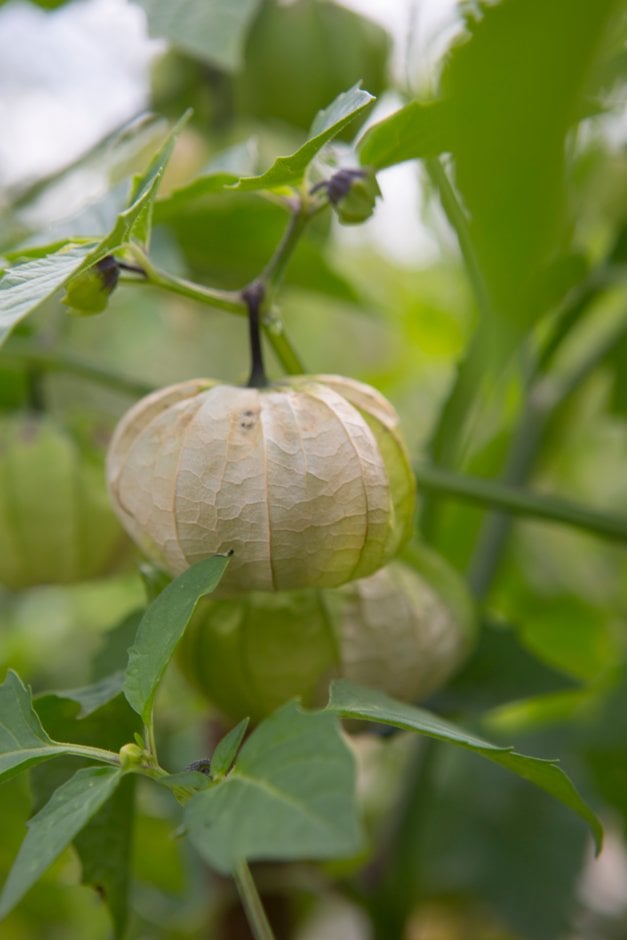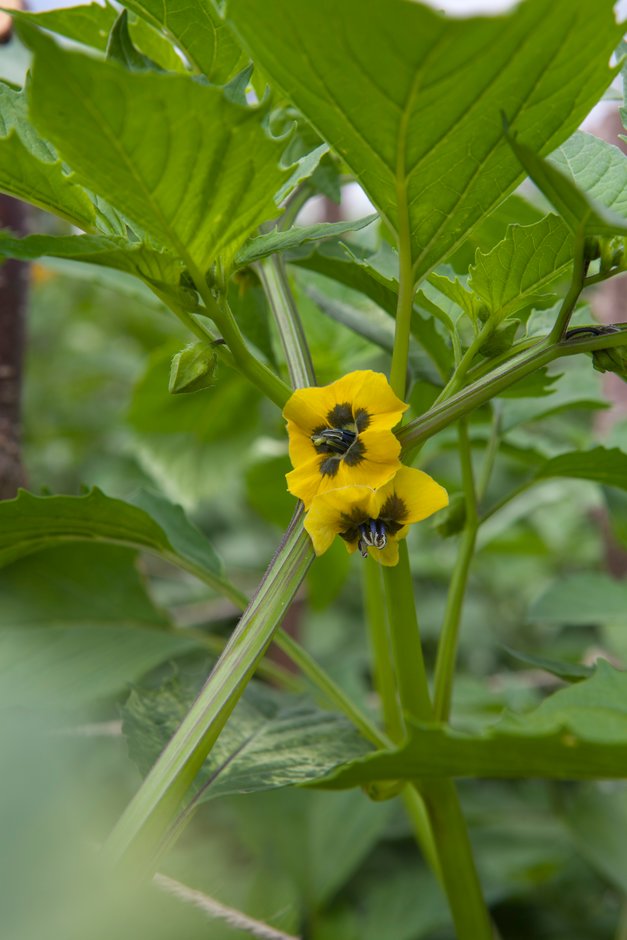Physalis ixocarpa
tomatillo
A lax, branching annual with serrated leaves growing to 1.2m tall and wide. Yellow summer flowers with brown centres are followed by rounded edible fruit to 7cm in diameter surrounded by a thin, paper-like husk; fruits ripen from green to yellow or purple
Size
Ultimate height
1–1.5 metresTime to ultimate height
1–2 yearsUltimate spread
1–1.5 metresGrowing conditions
Moisture
Moist but well–drained, Well–drainedpH
Acid, Alkaline, NeutralColour & scent
| Stem | Flower | Foliage | Fruit | |
| Spring | Green | |||
|---|---|---|---|---|
| Summer | Yellow Brown | Green | Green Yellow Purple | |
| Autumn | Green | Green Yellow Purple | ||
| Winter |
Position
- Full sun
Aspect
West–facing or South–facing
Exposure
Sheltered Hardiness
H2Botanical details
- Family
- Solanaceae
- Native to GB / Ireland
- No
- Foliage
- Deciduous
- Habit
- Bushy
- Genus
Physalis can be annuals or rhizomatous perennials with simple or pinnately lobed leaves and small bell-shaped flowers in the leaf axils, followed by fleshy, sometimes edible, yellow, red or purple berries, enclosed in enlarged, often colourful, calyces
- Name status
Correct
How to grow
Cultivation
Sow seed indoors in early spring. Grow on in a cool greenhouse, or outdoors in milder areas once all risk of frost has passed. Needs well-drained soil in a sunny position and support for the lax branches. Feed every 10-14 days with a balanced liquid fertiliser before switching to a high potassium liquid feed once the first fruits have set
Propagation
Propagate by seed
Suggested planting locations and garden types
- Cottage and informal garden
- Patio and container plants
Pruning
No pruning required
Pests
Generally problem free
Diseases
Generally problem free
Love gardening
Sign up to receive regular gardening tips, inspiration, offers and more
View our Privacy Policy
Get involved
The Royal Horticultural Society is the UK’s leading gardening charity. We aim to enrich everyone’s life through plants, and make the UK a greener and more beautiful place.

